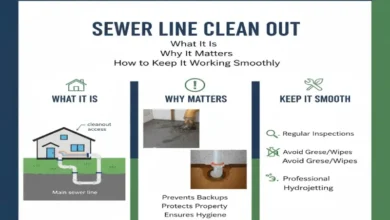Best Way To Clean Tile Floors

Tile floors can elevate the look of any home, offering a sleek and clean appearance that is both durable and long-lasting. But maintaining that fresh, gleaming look requires a bit of know-how and regular care. Whether you’re a devoted homeowner keen on keeping your living space in pristine condition or a cleaning professional aiming for the highest standards of cleanliness, this guide is designed to help you master the art of cleaning tile floors efficiently and effectively.
First Step – Understanding Your Tile
Before we dive into the nitty-gritty of cleaning, it’s crucial to recognize that not all tile is created equal. From ceramic and porcelain to natural stone and marble, each type has its own characteristics and needs when it comes to maintenance. Similarly, grout, the material that locks tiles together, may also vary and require special attention. Using the wrong cleaning methods or solutions can damage your floors, so identifying your tile type is the first step toward a sparkling outcome.
Second Step – Pre-Cleaning Preparations
Efficient cleaning starts long before the actual scrubbing begins. Remove loose dirt and debris using a vacuum (without a beater bar) or a soft broom. This prevents dirt from turning into a muddy mess when moistened and reduces the scrubbing needed later on. Also, assess the area for any damaged tiles or grout that may need repairing; cleaning over these areas may cause further damage.
Third Step – Choose The Best Cleaning Solutions
Choosing the right cleaning solution is crucial for effective cleaning without harming your floors. For most ceramic and porcelain tiles, a mixture of warm water and mild dish soap can be remarkably effective. Natural stone tiles, however, require specific pH-neutral solutions to prevent etching. If you’re leaning towards commercial options, make sure to pick a cleaner suitable for your specific tile type. Additionally, for a more environmentally-friendly approach, consider homemade solutions like a vinegar and water mixture, bearing in mind that vinegar is not suitable for natural stone.
Fourth Step – Choose The Tools You Need
Armed with the right tools, cleaning tile floors becomes an easier and more effective task. Microfiber mops or steam mops are excellent for picking up dirt and reaching into grout lines, avoiding the spreading of dirty water that occurs with traditional mops. For grout, a small brush (an old toothbrush works wonders) and the appropriate cleaner can help maintain its original color and prevent mold growth.
Step-by-Step to Start Cleaning –
-
- Sweep or Vacuum: Begin by removing any loose dirt, hair, and other debris from the tile surface.
- Mop the Floor: Use a damp (not soaking) mop with your chosen cleaner to mop the floor, rinsing the mop frequently with clean water. If you’re using a steam mop, ensure it’s deemed safe for your type of tile.
- Spot Clean Grout: Apply grout cleaner as needed and gently scrub with a brush. For persistent stains, allow the cleaner to sit for a few minutes before scrubbing.
- Rinse and Dry: Rinse the floor with clean water to remove any leftover cleaning solution, then dry with a clean cloth or mop to prevent water spots.
Conclusion
Consistent care and the right approach can keep your tile floors looking as good as new. While the process may require some effort, the satisfaction of seeing your floors shine is well worth it. Remember, when it comes to tile cleaning, knowing your materials and using the appropriate techniques are your best allies.
Follow Action Time USA


